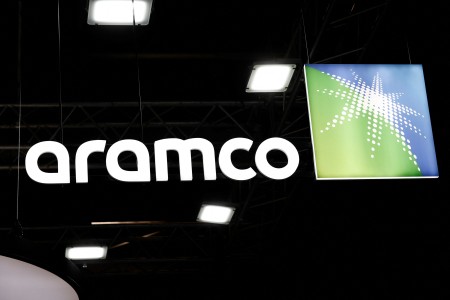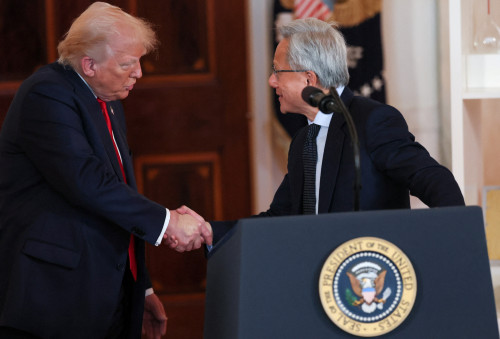By Hadeel Al Sayegh and Maha El Dahan
DUBAI (Reuters) – Saudi Arabia is selling a stake of roughly 0.64% in state oil giant Aramco in a landmark deal as the kingdom proceeds with Crown Prince Mohammed bin Salman’s plan to diversify the economy.
Saudi Arabia is offering 1.545 billion Aramco shares at between 26.7 and 29 riyals, which means it would raise nearly $12 billion at the top end of the range, according to a filing. It aims to announce the final price on June 7. The government may sell additional shares through a so-called greenshoe option.
The share offering on Riyadh’s Saudi Exchange is the culmination of a years-long effort to sell another chunk in one of the world’s most valuable companies after its record-setting IPO in 2019 raised $29.4 billion.
Sources told Reuters last week the offering could happen as soon as June.
Since the IPO, Aramco has remained a cash cow for the Saudi government, financing a mammoth economic drive to end the kingdom’s “oil addiction”, as the crown prince once called it.
The latest deal will allow the kingdom to finance large domestic projects tied to that agenda, said Hasan Alhasan, senior fellow at the International Institute for Strategic Studies.
Having missed its target for foreign direct investment and with a budget deficit of up to $21 billion in sight, “the kingdom is resorting to the sale of equity in Aramco and to debt issuances”, he said.
“The kingdom is likely to continue redirecting capital to other sectors including renewable energy, technology, tourism, logistics and manufacturing, which Riyadh hopes will constitute sources of long-term economic growth,” he added.
Aramco shares closed 0.17% lower on Thursday at 29.1 riyals ($7.76) to give it a market capitalization of about $1.87 trillion. Its IPO price valued it at $1.7 trillion, but shares traded 10% higher on their debut, roughly in line with its current valuation.
The company lifted dividends to almost $98 billion in 2023 from the $75 billion it had been paying annually, despite profit having dropped by nearly a quarter. It expects an outlay of $124.3 billion this year.
Aramco has also invested in refineries and petrochemical projects in China and elsewhere, expanded its retail and trading businesses, and sharpened its focus on gas, making its first foray into liquefied natural gas abroad last year.
Banks including Citi, Goldman Sachs, and HSBC are managing the sale, Reuters has previously reported.
DIVERSIFICATION DRIVE
Saudi Arabia’s de-facto ruler MbS, as the crown prince is known, has poured hundreds of billions of dollars through the kingdom’s sovereign wealth fund into mega projects, and everything from electric vehicles to sports and a new airline, to diversify the economy away from hydrocarbons and create jobs.
But lower oil prices and production weighed on economic growth last year while spending rose, leading to a fiscal deficit of around 2% of GDP, with a similar deficit expected this year.
Aramco introduced a special performance-based dividend last year, providing cash to the kingdom and helping to lure new investors. It offered $31 billion in dividends for the first quarter, a 59% boost from the first three months of 2023 even as profit declined 14% in the same period.
The company has also signed up more banks as market-makers to help improve liquidity in the shares.
The world’s biggest oil exporter trades at a higher price-to-earnings ratio than other global oil companies, including ExxonMobil, BP and Shell.
The stock is down about 12% this year, while shares of ExxonMobil and BP are up around 14% and 4% respectively.
Saudi Arabia is the de facto leader of the Organization of the Petroleum Exporting Countries, helping engineer price moves on world oil markets.
Aramco currently produces about 9 million barrels of crude a day, about three quarters of its maximum capacity, to comply with output cuts agreed by OPEC and its allies, known as OPEC+.
OPEC+ is set to decide its next production policies on Sunday, and several sources and analysts expect the meeting to roll over existing cuts into the second half of 2024.
Should OPEC+ surprise the market and cut production further, oil prices could rise from the current roughly $83 a barrel, but Aramco would have to reduce output and face even lower revenues.
($1 = 3.7506 riyals)
(Reporting by Hadeel Al Sayegh and Maha El Dahan; Writing by Yousef Saba; Editing by Bernadette Baum, Jan Harvey and David Gregorio)






